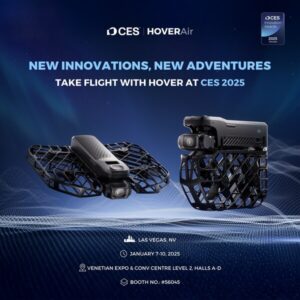At the ripe old age of 20, Google is synonymous with internet search. The famous Silicon Valley brand long ago became a verb.
Google Chrome remains the most popular web browser, leading on most mobile and desktop devices with more than 60 percent share across both platforms. It’s four times more popular than rival browsers.
In the U.S. alone, Google raked in about $34 billion in ad dollars tied to its dominant internet search business, per eMarketer.
With all its success and R&D spent to improve its search capabilities, it is surprising what a poor job Google and its core video offering, YouTube, do in two key areas of top importance to advertisers around the globe: search personalization and brand safety.
Just this week, YouTube once again became a shining example of what advertisers are desperately trying to fix: avoiding ad placements next to brand-inappropriate or dangerous content.
Google’s brand safety assurance is not fully baked yet
YouTube’s latest brand-safety debacle was sparked by a 20-minute video that has been viewed nearly 2.5 million times since Sunday.
Blogger Matt Watson said the comments sections on some YouTube posts that featured videos of girls performing things like gymnastics and yoga were being exploited by a “soft-core pedophilia ring.”
The videos were being time-stamped with minors in compromising positions and ads from companies like Disney and Nestle were being served up next to them. Unfortunately, YouTube’s recommendation engine was collecting and serving up more similar videos with associated ads being viewed and interacted with by pedophiles.
The outrage and furor over Watson’s discovery has caused major advertisers like AT&T, Disney, Epic Games and Nestle to pull advertising from YouTube as a result.
In response, earlier this week, YouTube has removed more than 400 channels amidst its latest child exploitation crisis.
However, significant brand damage and revenue loss for YouTube has been inflicted. A lack of faith in Google’s search algorithms and its brand-safety assurance is in the spotlight again following similar incidents that have occurred since 2017.
Brand safety concerns on YouTube
Following these well-publicized crises like YouTube’s most recent one, advertisers have grown increasingly concerned about ads appearing in brand-safe environments, especially on social-media platforms such as Google’s YouTube and Facebook.
A survey of more than 300 advertising decision-makers conducted by Oath, a Verizon company, last spring found that 99 percent of advertisers are concerned with their ads appearing in brand-safe environments. And 58 percent of them were more concerned than previous year.
A more recent study conducted by Teads found that “brand safety is keeping CMOs up at night.” Eight in 10 said that they’re more concerned with avoiding placement of ads next to brand-inappropriate content than ever before. It’s an issue that’s weighing heavily on the global digital ad industry that is now valued at more than $628 billion.
Ad platforms’ responses to protect brands
In response to advertisers’ concerns, major ad platforms have been adding more safeguards to avoid embarrassing and ineffective ad placements next to inappropriate content.
For example, Facebook rolled out new capabilities to exclude advertisements from predetermined categories such as conflict, gambling, guns, immigration, religion and tragedy. Google Ads offers some limiting functionality, but it is not as granular as what Facebook offers advertisers today.
Last month, new third-party software solutions from Integral Ad Science (IAS) and DoubleVerify were released to give YouTube advertisers more assurance that their video ads will appear next to brand-suitable content. This type of software is designed to reduce incidents of ads from tech giants, retailers, government agencies and media companies running alongside YouTube channels promoting controversial topics such as conspiracy theories, Nazis, North Korean propaganda and white nationalists, a trend reported on by CNN last April.
The new software from IAS and DoubleVerify to improve brand-safety assurance on YouTube incorporates machine learning to create models for determining ad appropriateness.
Similarly, last year, Google launched new features with machine-learning technology – including a new service called AdSense auto ads that helps publishers improve monetization and ad placement. Google claims the relatively new feature ensures that ads will be displayed when they’re likely to perform and provide a good user experience.
Publishers who participated in the beta saw and average lift of 10 percent with revenue increasing ranging between five to 15 percent.
However, the personalization capabilities from Google to improve ad efficiency are not as good as they should be for publishers or advertisers.
How does current Google Ads personalization stack up?
As an example for the latter, I’ll cite a story about a good friend’s recent experience with Google Ads. A small business owner, he runs a local plumbing business in Milwaukee. He spent hundreds of dollars on an ad campaign a few months back to increase incoming business leads using Google Ads.
Google’s auto-generated keywords for the campaign it scraped from his landing page were not relevant, especially in terms of geo-targeting for a local plumbing business. His website traffic went way up, but he did not gain one qualified sales lead as a result of the campaign. It was a dismal failure for him.
How much will deep learning improve it?
Many industry experts view deep learning as the Holy Grail for “changing the game for both advertisers and consumers.” According to a ClickZ story by Daniel Surmacz: “Deep learning is changing the way we think about effectiveness. It’s the most promising field of AI-based research found in Google Translate and Tesla self-driving cars.”
Without an ability for machine learning AI-powered platforms to “think on their feet” like human neural networks, many don’t have the same speed and efficiency-drivers that deep learning provides. It’s simply not possible for machine-learning AI engines to act like personal shoppers and cross-sell relevant items to consumers without deep learning’s more highly advanced algorithms.
Unless Google improves its personalization and brand-safety capabilities, it stands to lose more market share to others, most notably Amazon.
The share of new ad dollars has been on the decline for the longtime duopoly of Google and Facebook compared to two years ago. Amazon, a master of personalization and controller of its own walled garden, has emerged as a search advertising powerhouse and it’s on track to generate more than $10 billion in ad revenues over the next year.



